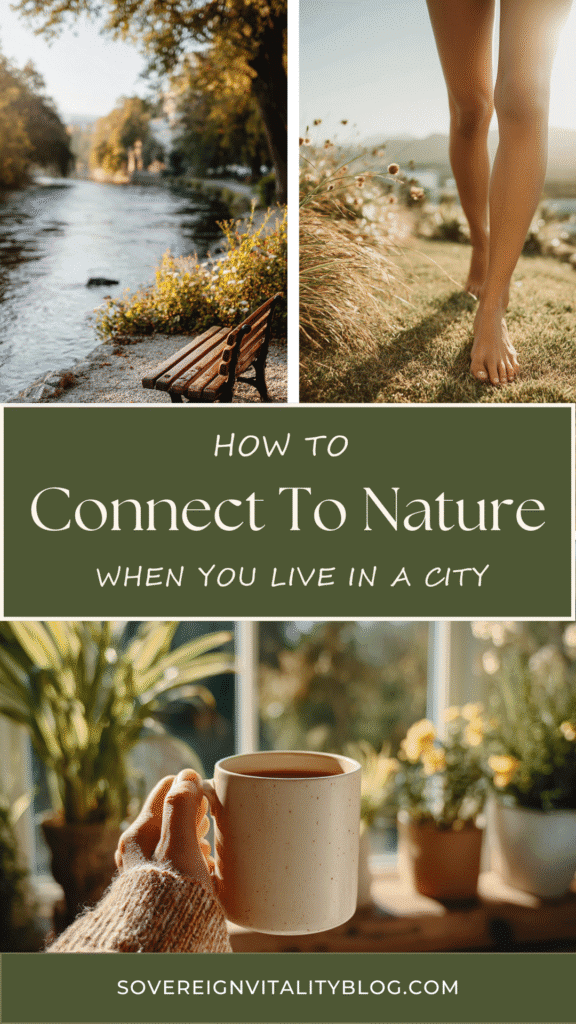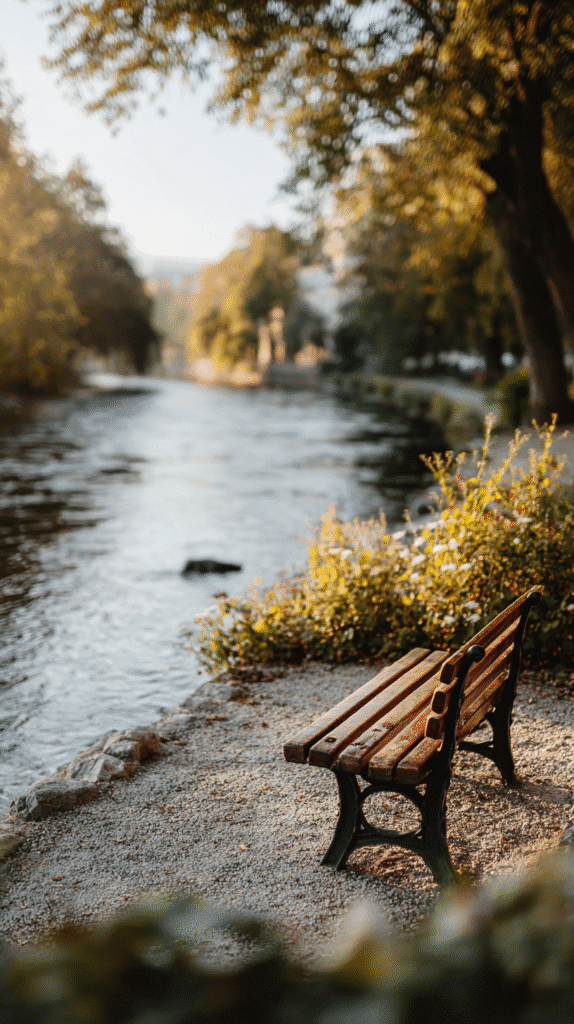This post may contain affiliate links, including those from Amazon Associates. If you make a purchase through these links, I may earn a commission at no additional cost to you. Learn more about our affiliate policy.
I know how easy it is to feel cut off from nature when you live in the middle of a city. Concrete, glass, and asphalt stretch in every direction, and the hum of traffic often drowns out the softer sounds of life.
But even in an urban environment, nature is still here between sidewalk cracks, above us in the sky, in the rhythm of a breeze.
The secret is learning how to notice, savor, and lean into those connections, no matter where you are.
Connecting with nature isn’t about living next to a forest or having a sprawling backyard.
It’s about cultivating practices that keep you grounded and tuned into the natural world, even from the smallest apartment or busiest street corner.
With a few intentional habits, you can weave nature into your daily life in ways that nurture calm, clarity, and sovereignty.

Start small by noticing what’s already there
One of the simplest shifts is simply paying attention. Notice the way the sky looks each morning, how the light changes by evening, or the pattern of leaves on a tree you pass every day.
Urban living can train us to keep our eyes down, rushing from one destination to the next. But slowing down to observe natural details helps you reconnect without adding anything extra to your schedule.
Try turning your morning walk to the subway or your lunch break into a mindful noticing practice. Listen for birdsong, breathe in the scent of rain on pavement, or pause to feel the sun on your face.
The more you pay attention, the more you realize how alive the city truly is.
Practice grounding techniques

Grounding is the practice of reconnecting your body and mind to the earth, bringing a sense of balance and calm. In a city, grounding can be as simple as taking your shoes off and standing barefoot in the grass at a park.
If that feels too exposed, place your hands on a tree trunk or sit on the ground for a few minutes. These small acts send a clear signal to your nervous system: you are here, you are steady, and you are supported.
When green space is limited, visualization grounding works beautifully. Imagine roots extending from the soles of your feet deep into the soil beneath the city.
Take slow breaths and picture yourself drawing stability up from the earth. This practice is especially helpful when life feels chaotic or overstimulating.
For more ideas for the colder months, find more ideas on my post How To Ground Your Nervous System Indoors For Fall.
Create simple nature rituals at home
You don’t always need to go outside to connect with nature. Bringing natural elements indoors can transform your home into a sanctuary.
Keep a few potted plants on a windowsill, place a small bowl of stones or shells on your desk, or light a beeswax candle at dinner. Even a single houseplant can shift the energy of a room and remind you of your bond with the natural world.
Growing your own food, even on the smallest scale, can also deepen your connection. Herbs like basil, mint, or thyme grow happily in jars or small pots.
Imagine snipping fresh parsley from your own windowsill to sprinkle over dinner—it’s a grounding act of sovereignty right at home. If you’re curious how to get creative in limited space, check out my guide to container vegetable gardening for renters.
Seek out nearby green and blue spaces

Most cities have pockets of nature if you know where to look.
Local parks, botanical gardens, rooftop terraces, riversides, or even quiet courtyards all offer moments of green and blue space.
Aim to visit them regularly, even if only for ten minutes. These short encounters can reset your mood, reduce stress, and improve focus.
Water has its own calming effect, so don’t overlook fountains, ponds, or lakes in your area.
The sound of moving water naturally soothes the nervous system. Simply sitting by a water feature, breathing slowly, and watching ripples move across the surface can be a powerful way to reconnect.
Unplug and slow your pace

Phones are often our biggest barrier to connecting with nature. Try leaving your phone behind for a walk or setting it to airplane mode during your time outdoors. Give yourself permission to simply be while listening, watching, and noticing without distraction.
You might bring a journal or sketchbook instead. Write down what you see, draw the texture of a leaf, or record the colors of the sky. These practices slow your thoughts and deepen your awareness.
Take this practice further with a full 7 day digital detox plan.
Connect through food and cooking

One of the most tangible ways to reconnect with nature is through the food you eat. Choose seasonal produce when you shop, and let your meals reflect the rhythm of the earth. Roasting root vegetables in autumn or slicing fresh berries in summer connects you directly to the cycles of growth and harvest.
If you’re looking for guidance on aligning your meals with clean, whole foods, my guide to building a clean eating meal plan offers practical steps.
Eating seasonally and intentionally is a form of everyday grounding that nourishes both body and spirit.
If you’d like to take this a step further, exploring urban foraging is a beautiful way to connect with the hidden abundance of edible plants growing right in city spaces.
Join in community nature projects
Even in cities, there are countless ways to connect with nature through community. Look for neighborhood gardens, volunteer clean-ups, or outdoor yoga classes in your area.
These experiences not only connect you to the earth but also weave you into a supportive community of people who share your values.
Working with soil in a community garden or planting herbs with neighbors can be incredibly healing. It reminds us that we are not alone in our longing for connection, and that even in the busiest environments, community and nature are intertwined.
Adapt for seasons and weather

Nature connection shifts with the seasons, and so can your routines. In summer, spend mornings outdoors before the heat builds. In winter, lean into houseplants, sunlight through windows, or the simple act of watching snow or rain.
Nature doesn’t disappear when the weather changes, it just transforms.
Bringing the outside in through fresh herbs, natural scents, or even a vase of seasonal branches can help maintain that link when stepping outdoors feels less inviting.
Craft your own daily nature rhythm
Connecting with nature in the city is not about grand gestures. It’s about weaving small, grounding practices into your daily rhythm. Here’s a simple example:
- Morning: step outside barefoot, breathe deeply, or notice the sky before the day begins
- Midday: take a phone-free walk in a nearby park, eat lunch outdoors, or sit by water if possible
- Evening: light a candle, tend to a plant, or reflect on the natural details you noticed that day
Over time, these tiny rituals build a steady sense of belonging and calm.
Closing reflections
Living in a city doesn’t mean living without nature. The natural world is all around you, waiting for you to slow down and reconnect.
Whether it’s through grounding techniques, mindful walks, indoor plants, or seasonal cooking, you can nurture a deeper relationship with the earth right where you are.
The more you practice, the more you’ll realize that nature is never absent—it’s always available in the sky above, the air you breathe, and the quiet resilience of life growing in unexpected places.
Connecting with it is simply a matter of remembering to look, to listen, and to root yourself in the present moment.



